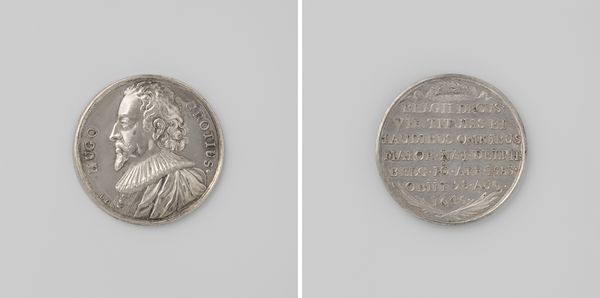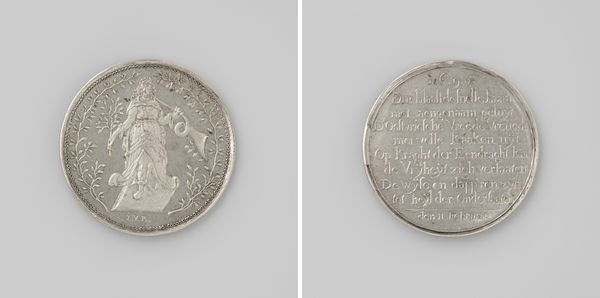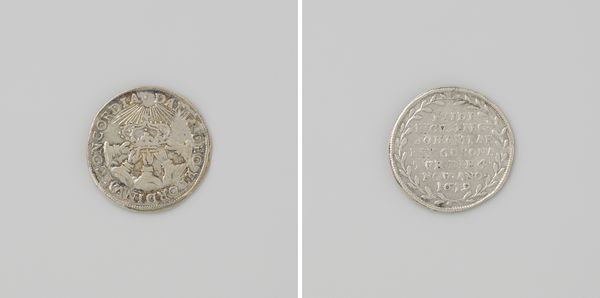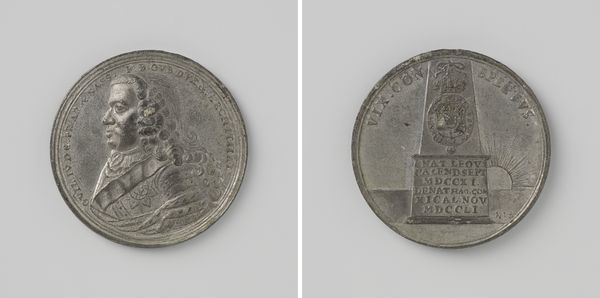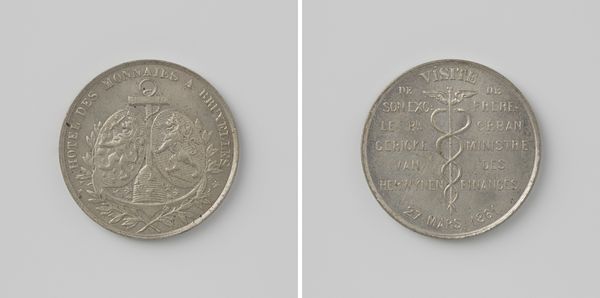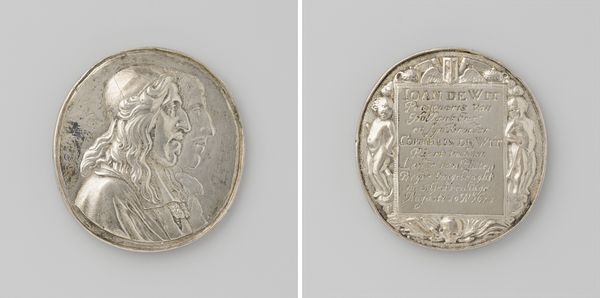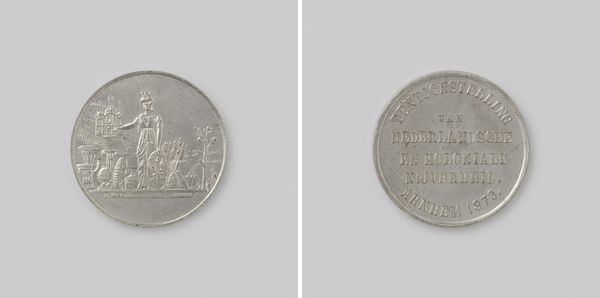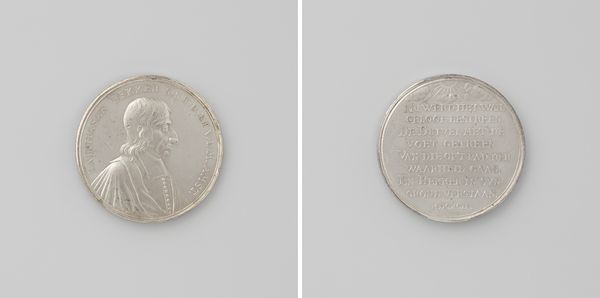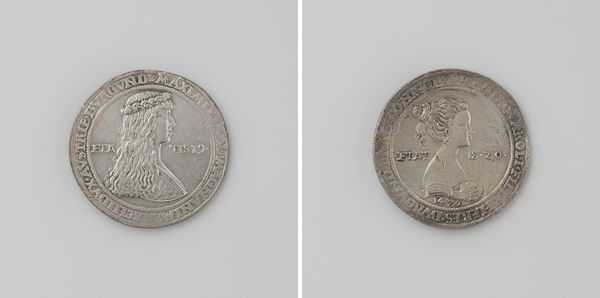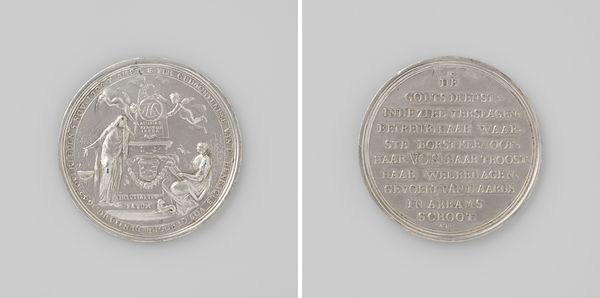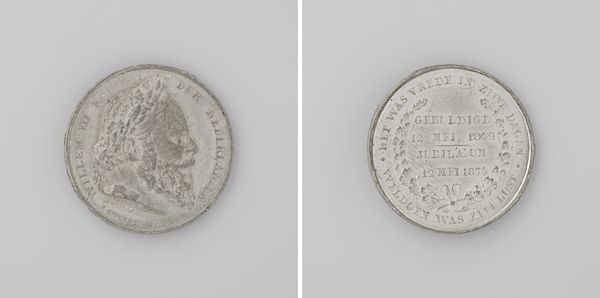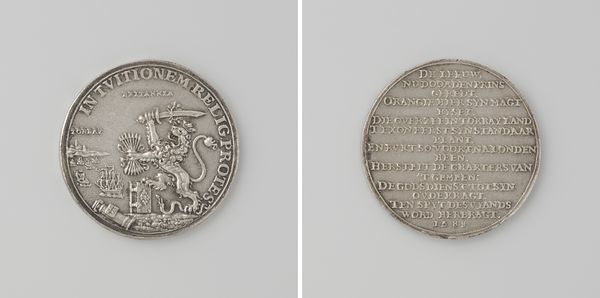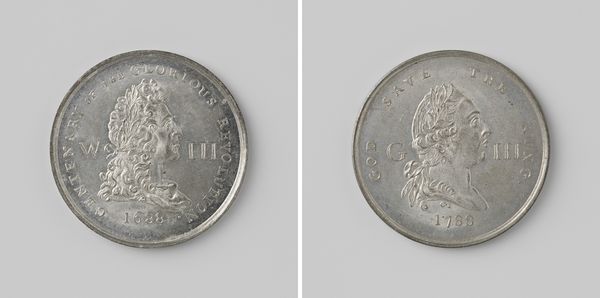
mixed-media, print, metal, relief, bronze, sculpture
#
mixed-media
# print
#
metal
#
relief
#
bronze
#
sculpture
Dimensions: diameter 3.4 cm, weight 12.96 gr
Copyright: Rijks Museum: Open Domain
Curator: Here we have a mixed-media commemorative piece, a bronze relief medal dating back to 1873. The medal, crafted for the fiftieth anniversary of the Carnival in Cologne, captures a slice of German cultural history. Editor: It strikes me as incredibly detailed for its size. I immediately pick up on the imagery of the winged horse. Curator: Indeed. The iconography here is rich. Above a rendering of Cologne itself, a rider sits astride a winged horse, while the words “Alaaf Cöln” grace the top in a banner flanked by 1823 and 1873, the anniversary years. What do you make of that? Editor: "Alaaf Cöln" is, as I understand it, a traditional carnival cheer, proclaiming Cologne’s spirited celebration. The winged horse evokes classical associations—perhaps a deliberate attempt to elevate the Carnival's significance by linking it to cultural prestige and traditions. This also speaks to its potential societal influence during that period, how this type of celebratory medal could spread those ideas in broader society. Curator: Absolutely. And what interests me is that this medal, cast in bronze, elevates what we might consider a purely ephemeral event—the carnival—into a permanent object. Think about the labor, the mold-making, the casting process; each a testament to valuing this tradition and turning street performance into material form, challenging the boundaries between temporary revelry and enduring craft. Editor: Right, it memorializes more than just the anniversary, doesn’t it? There’s a decided choice here to embed the very spirit of Cologne within something lasting. It becomes an amulet, a tangible symbol of identity and cultural pride carried in peoples pockets and in public celebrations. I wonder what the circulation of this token did for Cologne's idea of itself? Curator: The medal also reflects the burgeoning sense of national and local identity in 19th-century Europe. Think of it being pressed, worn, displayed; as a declaration of cultural allegiance during a period of shifting borders and societal changes. The scale lends itself to be almost talismanic too, doesn't it? Editor: A lasting memory forged into bronze—powerful and lasting, literally and symbolically! Medals such as this really bring cultural and civic life into tangible form. Curator: Indeed. It moves me to reconsider what we traditionally separate as “high art” and everyday material culture. This piece blurs that divide compellingly.
Comments
No comments
Be the first to comment and join the conversation on the ultimate creative platform.
